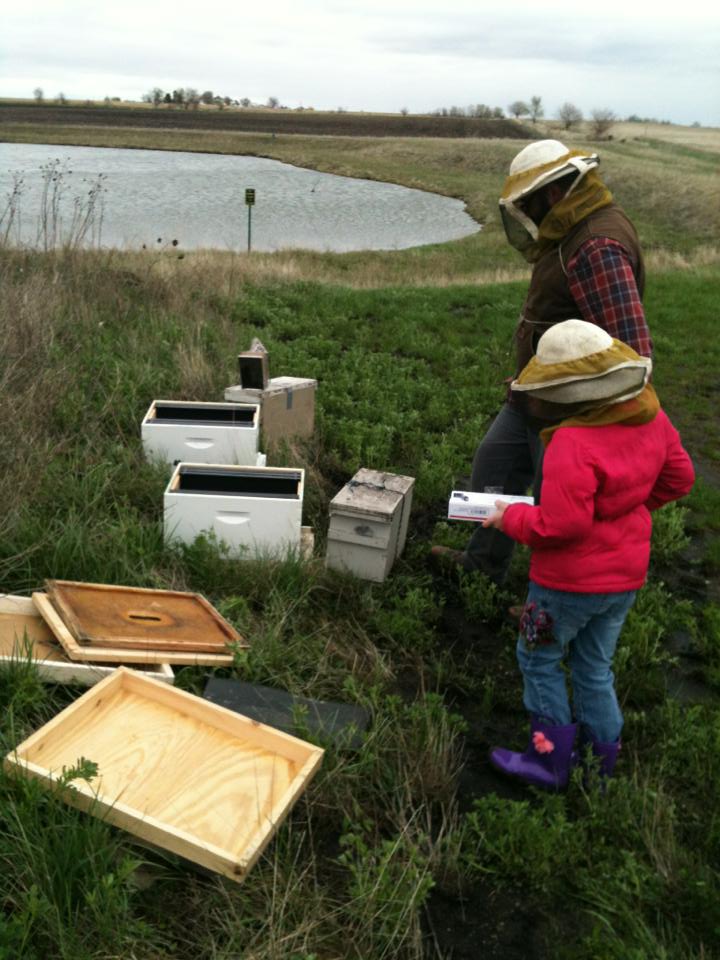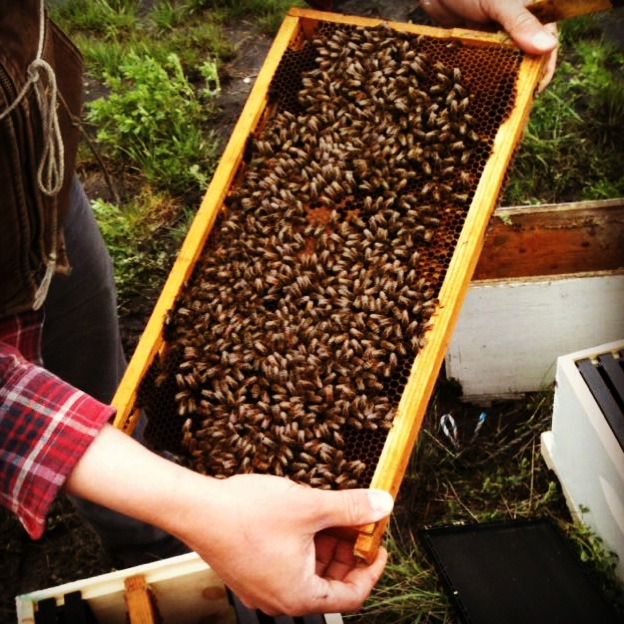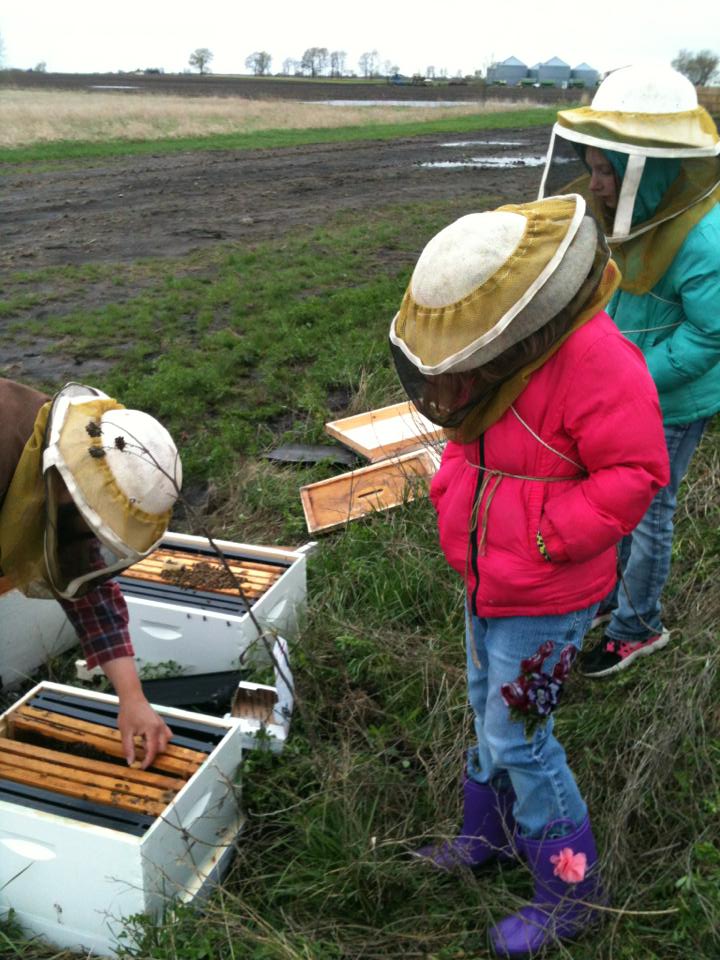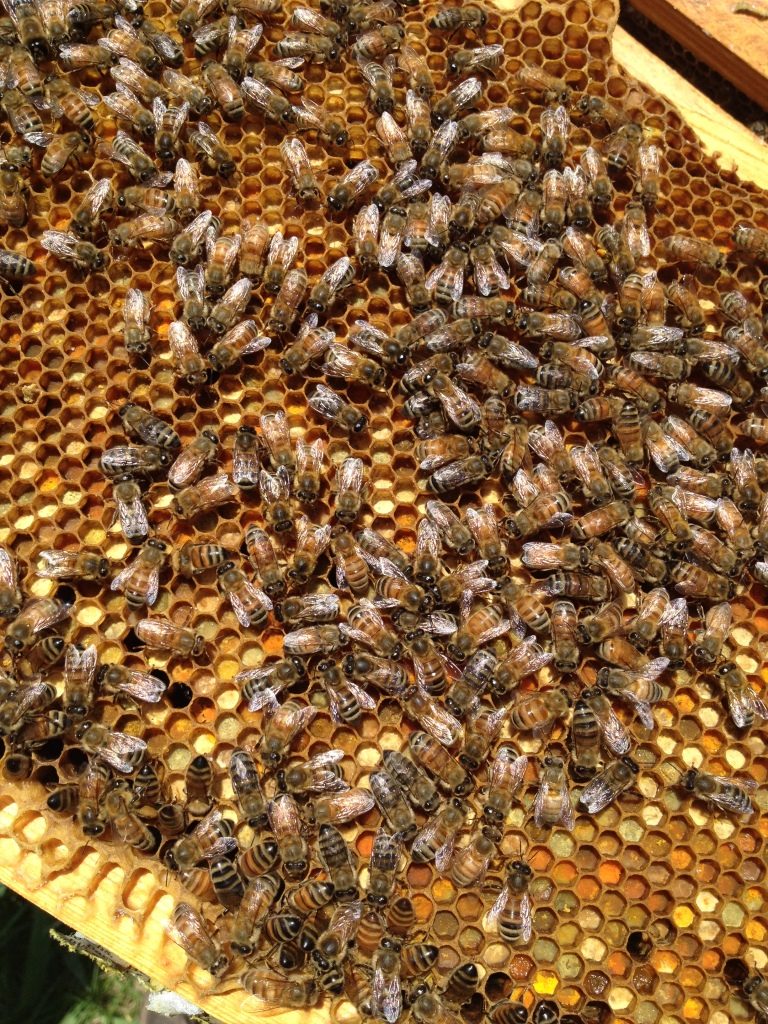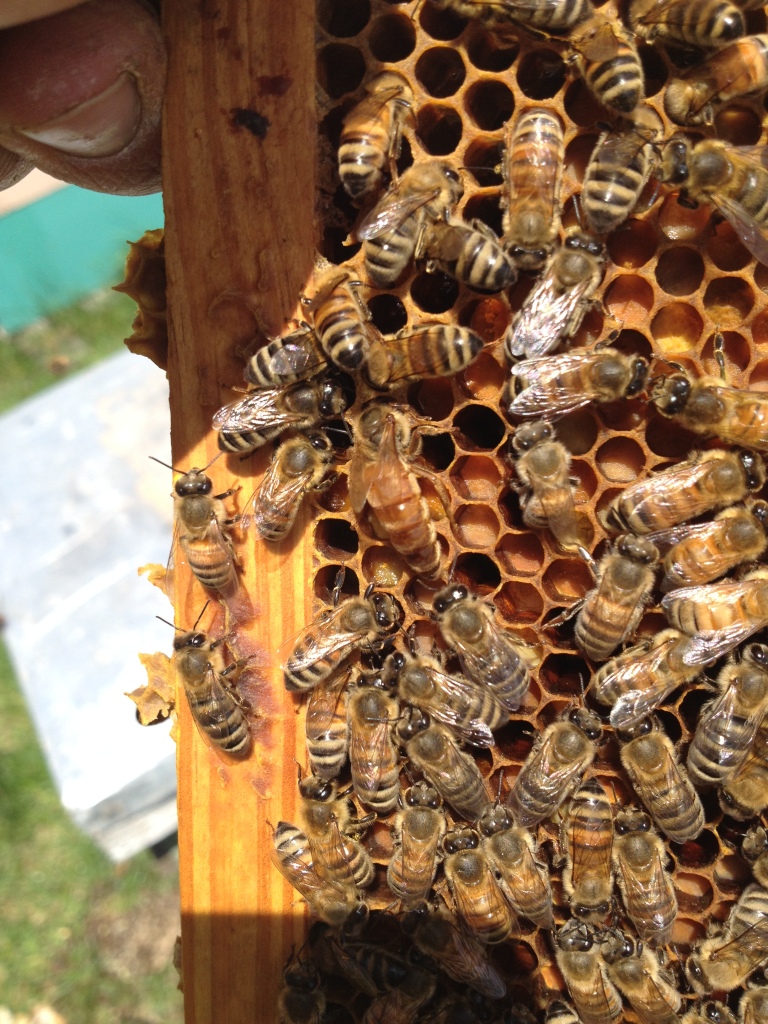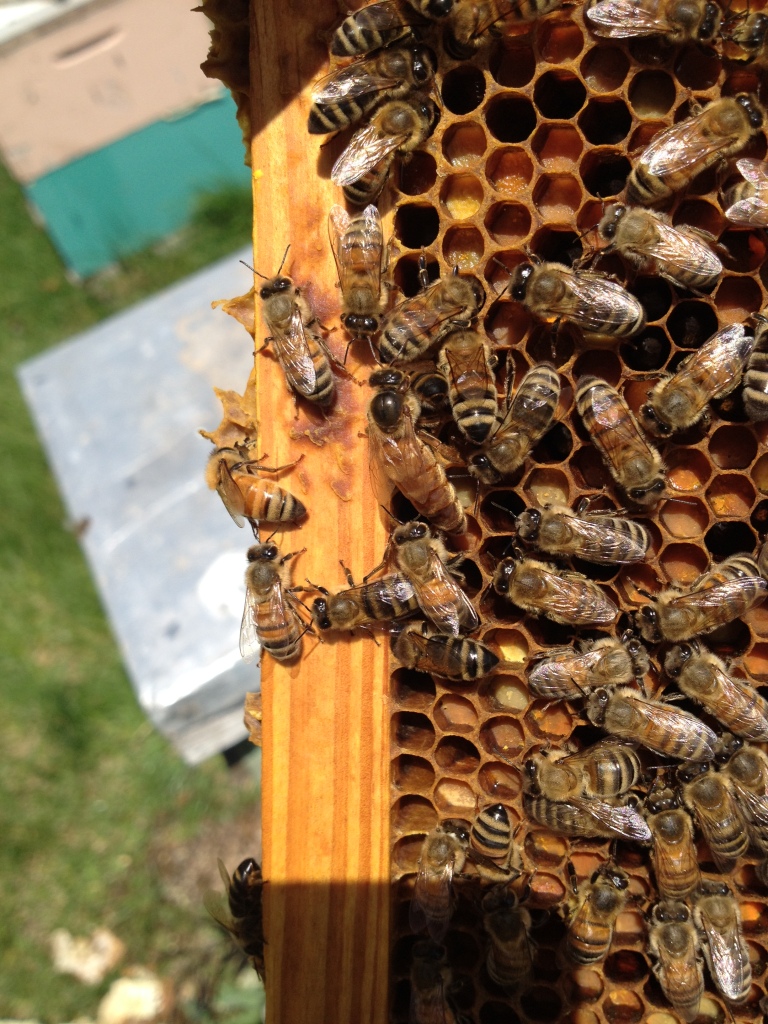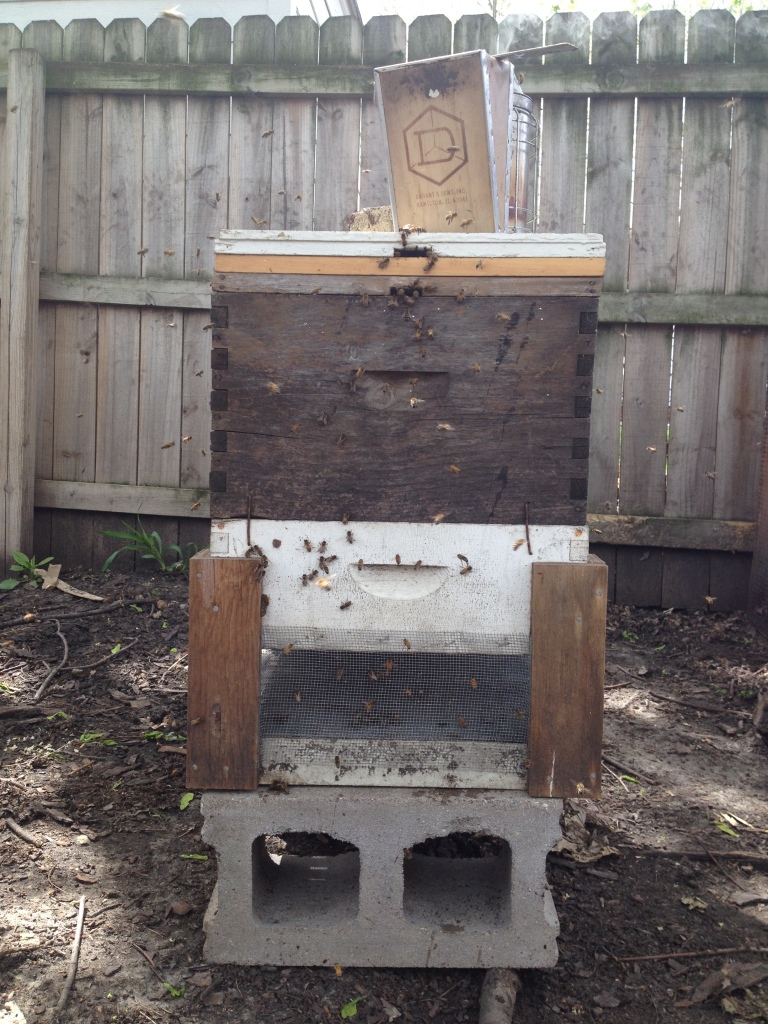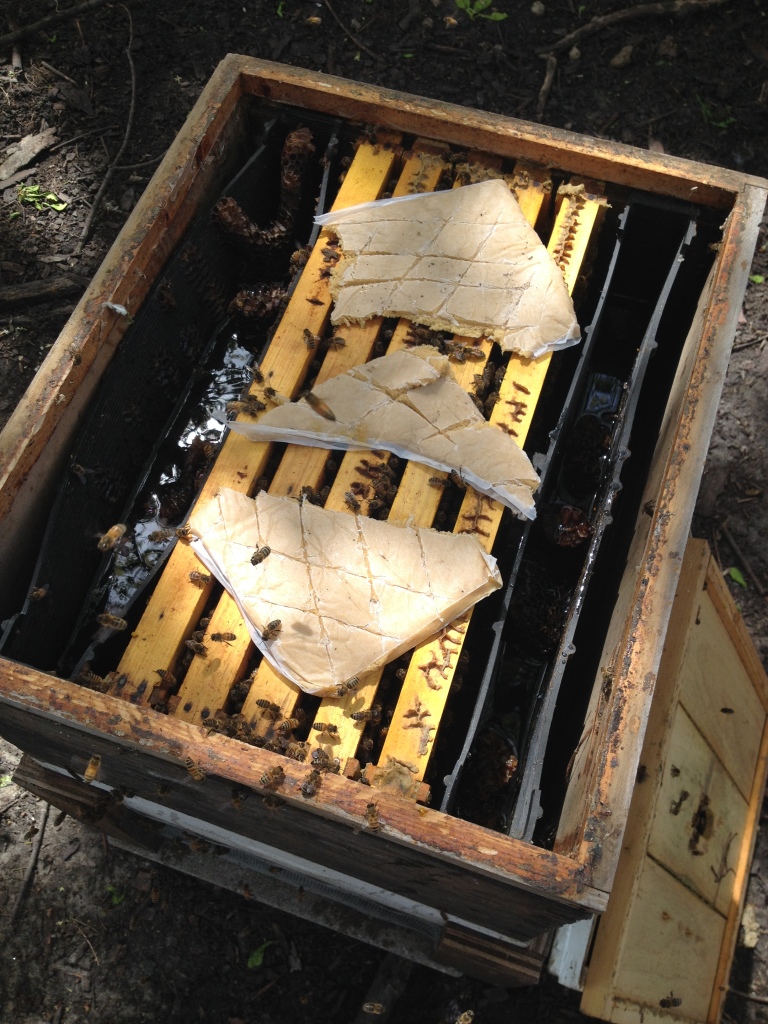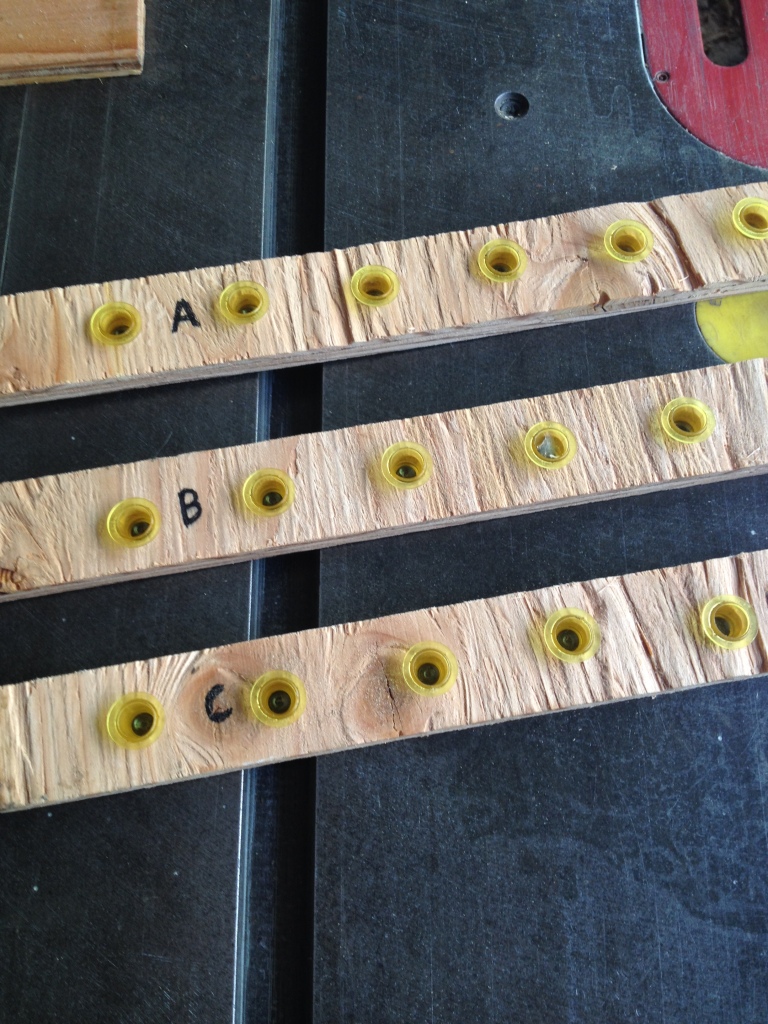Tagged: spring
An Explosive Spring
Hello dear readers, both of you.
Spring here has been explosive. Hives that were well cared for last fall have overwintered beautifully. I lost four of around 80 which were put into winter. Of course, just once, it would be great to find them all alive & well in springtime – but I’m very happy with a 5% loss. For the last 6 weeks or so, the beework has basically been feeding sugar syrup and pollen substitute. They’ve responded well to this and built up well. Our weather has been nearly perfect from a bees’ perspective as well. In most of the hives there is a nearly overwhelming population bees.
In the past couple weeks I’ve started making splits. My numbers are up right around 100 hives now and the splitting has only just begun. I’d like to have more accomplished, but it’s been a struggle to get queens for the nucs and splits. I have 30 queens ordered and am currently wringing my hands in anticipation. I am slightly more patient than the bees — the main concern is their urge for swarming. I’ve been cutting out early swarm cells, and adding additional boxes to give larger hives more space, and rotating hive bodies, and equalizing stronger with weaker colonies, and I’ve made up several nucs with ripe queen cells tearing down the size of the hives that made them… I’m about all out of tricks; simply need the queens to arrive.
Relatedly, I picked up this book at the Eastern Apicultural Society meeting last summer. Very appropriate reading coming into this spring. I met & got to know the author a tiny bit also at the meeting. Stephen Repasky is a fellow EAS Master Beekeeper. Strikes me as a good guy and knowledgeable beekeeper. He did a great job covering this subject. The book is interesting and practical and recommended.
Despite the nearly perfect spring season we’ve shared here, I have run into a couple unfortunate cases of yuk. I was contacted by a beekeeper nearby. He described some observations of bee dysentery (read: shit stains) covering his hive entrances combined with numbers of crawling bees in front of a couple of his hives. I went out and had a look. Most beekeepers recognize that these could be a couple vague symptoms of a Nosema infection. It was a relatively cold morning in the upper 40s, but we popped the hives open quickly. The colonies seemed to be in great shape. Beautiful frames of brood, lots of pollen stores in a variety of colors, some nectar, and lots & lots of bees. They seemed just fine but we took some bee samples anyway (a couple vials of 40 or so older workers collected under alcohol), one sample of the crawlers and one sample off the inner cover. I ran the samples that afternoon and found 4.7 million spores per bee — which is quite high. I’d never have guessed this from the appearance and strength of the colonies. Recommendation was a quick treatment of Fumagilin B in syrup. Take your time with the bees and look for the subtleties.
Nosema spores at 400x:
Another similar unfortunate experience happened in an apiary inspection just last week. I was there to look through a bunch of nucs which had been purchased without receiving a health certificate. Nucs looked good for the mostpart, then we went across the yard to look through some of his 100 or so hives which have recently come back from the almonds. Immediately we found this:
A couple cups of dead bees in front of every hive. We called the Dept of Ag’s Pesticide Bureau and fortunately an inspector was available to come out that afternoon. He collected a sizable sample of the dead & dying bees, and also a swab sample from a metal surface in the yard. These will eventually be analyzed for pesticide residues – specifically, but not limited to, clothianidin and thiamethoxam, the common neonicotinoid seed treatments. We’ll see what the lab finds, but this seems entirely “textbook” to me. Off the record, and unprofessionally, it’s a “corn dust kill”, simple as that. In the last couple days the fields surrounding the bee yard had been planted. It’s all too common here each spring though it only rarely is properly reported. The kill is likely relatively insignificant to the majority of these otherwise strong colonies in numbers of bees taken, but at least some of the hives have ejected their queens — making the losses very significant. Again, take the time to carefully check your hives. The inspection begins even prior to taking the roof off.
Spring work isn’t limited to the bees. I’ve also logged a healthy number of hours underneath the vehicles. This includes rebuilding the transmission of a 95 Civic with all new bearings and seals. Thanks internet and Harlan … couldn’t have done this one on my own. Went fine and didn’t even have any leftover parts.
A healthy number of relatively small pieces which H pressed off and replaced, with my assistance:
And Lastly, Varroa.
I talk nearly nonstop to beekeeper groups about the importance of killing mites. Still, I’m always disappointed by the number of beekeepers who actually take the time and effort to sample their colonies to get Varroa counts and then use those numbers as informed beekeepers to make educated treatment decisions. Too often in inspections I stand with a beekeeper who believes innocently that they have no problem with mites, then we take a count only to find Varroa numbers well above injury. Above, I’ve highlighted damages related to Nosema and (likely) pesticides. Our Varroa mite damages overshadow everything else. We need to know our numbers at any given time, and murderously murder the mites whenever their population is climbing too high. Generally treatments tend to be made in springtime and/or late summer since many of the treatments shouldn’t be performed with honey supers placed on the hives. It’s time to know your numbers. Right now. Don’t delay!
Here’s a video I made the other day demonstrating my preferred way to sample a hive for mites:
I’m no movie star, but the point gets made. The audio gets quite a bit better after the first several seconds; I call it good enough. Hopefully, someone will find it helpful.
Thanks for reading.
Andy
(Braggot)
getting going.
We’ve had a nice couple weeks around here since last time I sat down to write something. Been running around a lot — mostly talking, not actually getting to do too much bee work … yet. I’m ready to go, as might be evidenced by this travel kit:

Note the four most essential components: antacids, headache pills, iodine, and extra lighters.
A neat experience of last week was getting to work with some people from the local Izaak Walton League. They been working with some 4Hers to host some beekeeping educational sessions and establish a couple colonies back behind the range. Some tornado watches in the area kept some people from venturing out to the first bee class (which was fortunately indoors), but the hives are now up and going. Thanks to Vern Ramsey for donating one of the nucs and to Curt & Connie Bronnenberg for the two queens. Here’s a couple photos taken by Jen Anhalt of the installation on a cold and windy day.
Unrelatedly, Science!
Had the task of collecting a few bees for the greater good.
These bees will be used somehow by the IDALS Lab folks in equipment calibration or a control or a baseline or who-knows-what as part of the upcoming season’s pesticide residue analysis work.
I hope they like their new home:
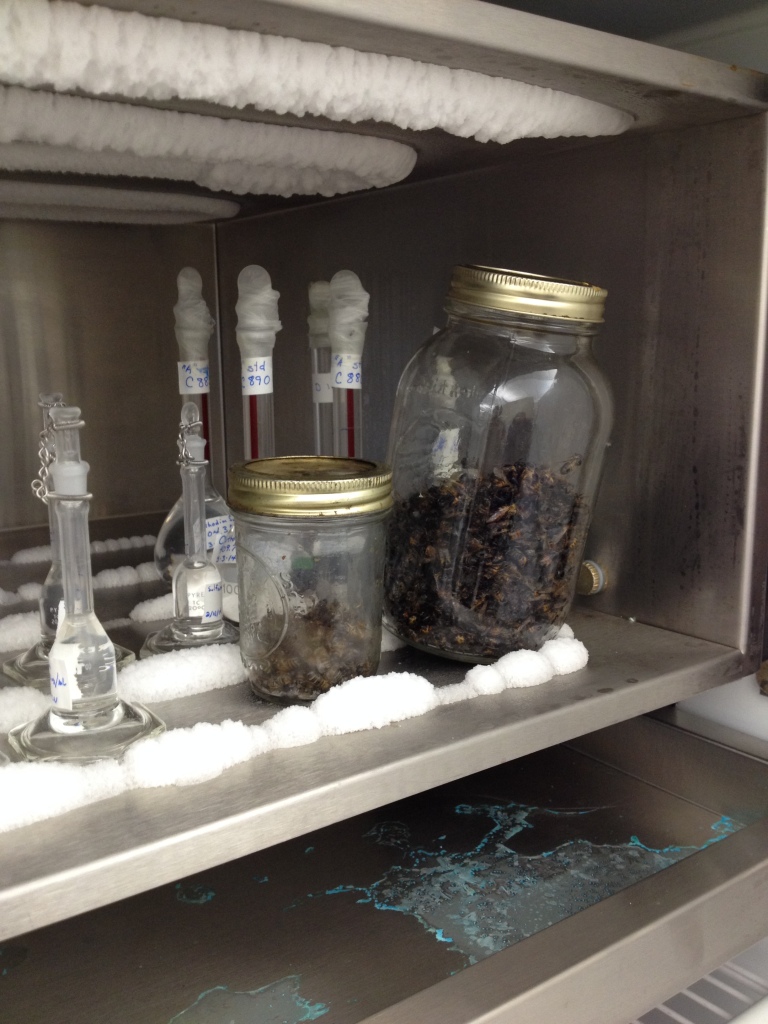
Meanwhile, my hives are building up pretty well. There’s a lot of pollen coming in, which does wonders for the bees’ general positive mental attitude. And mine, I guess.
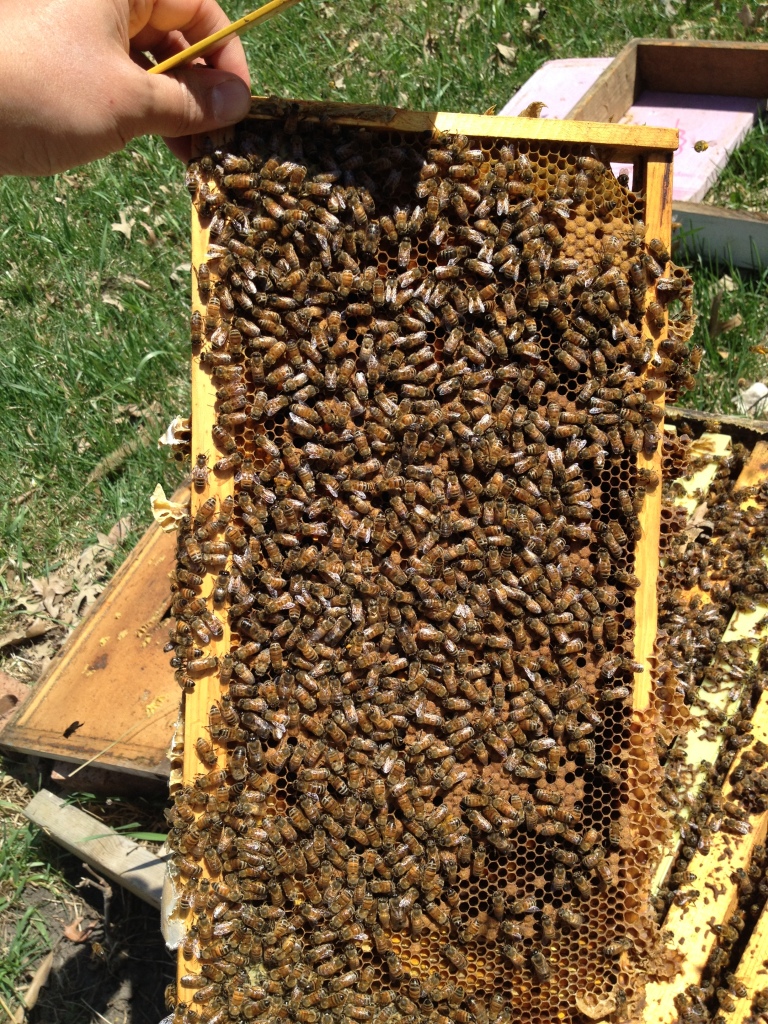
And, finally, it’s time to make some queens. Yesterday I made up a strong cell starter colony. Here’s their hive … a little different from the typical but it works well. The temperature is a little cooler than what I’d like for this, but not too bad. I loaded them up with an extra pound or so of bees to overcompensate.
Two halfway full division board feeders, pollen frames, frames of capped brood, and a pollen sub patty. Not shown in the photo is the frame of cell bars.
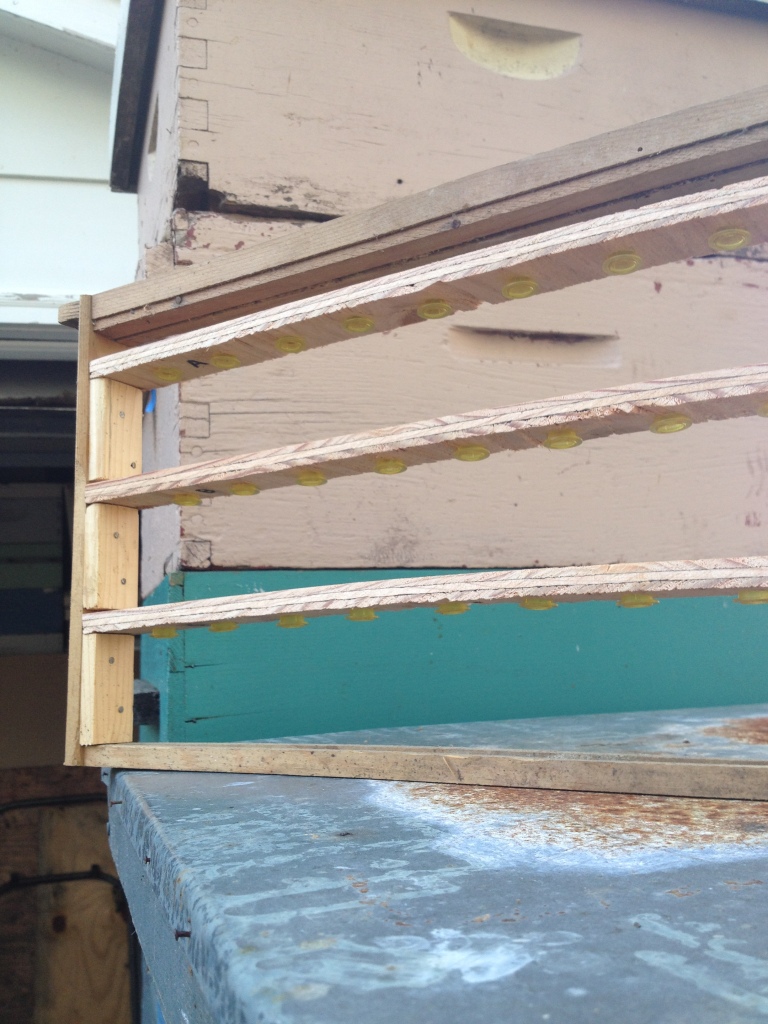
It’s in there now being “polished” by the bees. Here this evening, I’ll graft 30 tiny larvae into the cups, and cross some fingers. Please stay tuned.
willow pollen
Yesterday, I visited a hobby beekeeper just over in Dallas County. The bees were making good use of the sunny warm morning. We were happy to see them finding so much pollen. It’s only started coming in around here in the last couple days. Kind of a soft buttery white color, from willows. This willow pollen probably more than anything else signals the transition from winter to early spring for the bees, and is really nice to see. Any day now, the maple buds will pop and we’ll see lots of that pollen coming in — more of a dirty yellow color.

![IMG_3688[1]](https://mbshoney.files.wordpress.com/2015/05/img_36881.jpg?w=300&h=300)
![IMG_3721[1]](https://mbshoney.files.wordpress.com/2015/05/img_37211.jpg?w=300&h=300)
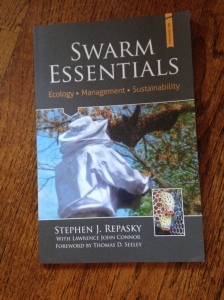
![IMG_3659[1]](https://mbshoney.files.wordpress.com/2015/05/img_36591.jpg?w=300&h=300)
![IMG_3749[1]](https://mbshoney.files.wordpress.com/2015/05/img_37491.jpg?w=300&h=225)
![IMG_3784[1]](https://mbshoney.files.wordpress.com/2015/05/img_37841.jpg?w=300&h=300)
![IMG_3650[1]](https://mbshoney.files.wordpress.com/2015/05/img_36501.jpg?w=300&h=300)
![IMG_3736[1]](https://mbshoney.files.wordpress.com/2015/05/img_37361.jpg?w=225&h=300)
![IMG_3726[1]](https://mbshoney.files.wordpress.com/2015/05/img_37261.jpg?w=300&h=300)
